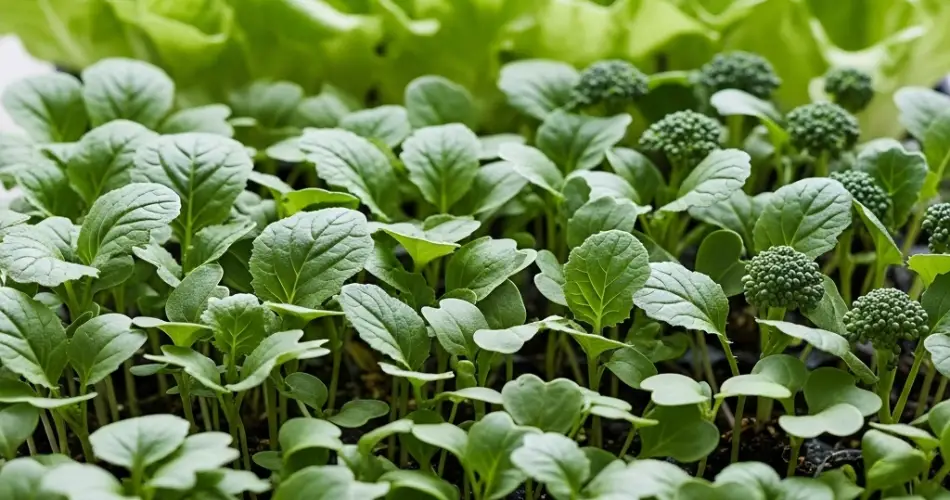Growing healthy seedlings is the foundation of a successful garden. Whether you are planting vegetables, herbs, or flowers, the strength and vigor of your seedlings directly influence the quality of your mature plants and the overall yield you can expect. Unfortunately, many gardeners struggle with weak, leggy seedlings that don’t thrive when transplanted outdoors.
What if there was a simple, natural solution to boost your seedlings’ growth, strengthen their roots, and thicken their stems? This article introduces a powerful feeding technique that can transform your seedlings into robust, vigorous plants, setting you up for an abundant harvest.
Why Seedling Health Matters
Seedlings are young plants that require optimal care during their early stages. At this delicate phase, they are highly susceptible to stress caused by poor nutrition, inconsistent watering, or inadequate light. Weak seedlings often have thin stems, shallow root systems, and poor resilience against pests and diseases.
Strong seedlings, on the other hand, develop:
-
Deep, extensive roots that efficiently absorb water and nutrients.
-
Thick, sturdy stems that support healthy leaf growth and withstand wind or handling.
-
Higher energy reserves to produce more flowers or fruits later on.
Feeding seedlings correctly is key to encouraging this strong development.
The Secret Feeding Ingredient
The feeding method that stands out for promoting strong roots, thick stems, and higher yields involves the use of a natural, nutrient-dense solution made from seaweed extract or kelp-based fertilizer.
Seaweed extract is rich in:
-
Trace minerals such as potassium, calcium, magnesium, and iron.
-
Natural growth hormones like cytokinins and auxins that stimulate cell division and elongation.
-
Amino acids and vitamins that enhance plant metabolism.
-
Natural compounds that improve stress tolerance and disease resistance.
These elements work synergistically to nourish seedlings beyond basic fertilizer needs.
How to Use Seaweed Extract for Seedlings
Using seaweed extract on seedlings is straightforward and effective:
-
Dilution: Dilute the seaweed extract according to the manufacturer’s instructions, usually about 1-2 teaspoons per liter of water.
-
Feeding: Apply the diluted solution directly to the soil around seedlings or use a spray bottle to mist the leaves gently.
-
Frequency: Feed seedlings every 7-10 days, starting when the first true leaves appear, continuing until they are ready for transplanting.
This routine supplies steady nutrients and growth enhancers that strengthen seedlings at their most critical stages.
Benefits of Feeding Seedlings with Seaweed Extract
1. Vigorous Root Growth
Seedlings develop a dense root network, improving nutrient uptake and anchorage. Strong roots also help plants survive transplant shock when moved outdoors.
2. Thicker and Stronger Stems
Seaweed’s growth hormones stimulate cell growth in stems, resulting in sturdier seedlings less prone to bending or breaking.
3. Enhanced Stress Resistance
Seaweed contains compounds that increase seedlings’ tolerance to drought, temperature changes, and diseases, making them hardier in variable conditions.
4. Higher Yields and Better Quality
Healthy seedlings translate into mature plants that flower more profusely and produce larger, more abundant fruits or flowers.
5. Eco-Friendly and Safe
Being natural and biodegradable, seaweed extracts are environmentally friendly and safe for home gardeners and pets.
Alternative Natural Feeding Options
If seaweed extract is unavailable, other natural feeding options can also support strong seedling growth:
-
Compost Tea: A liquid fertilizer made by steeping compost in water that provides a broad spectrum of nutrients and beneficial microbes.
-
Fish Emulsion: A natural fertilizer high in nitrogen and trace minerals that encourage leafy and root development.
-
Homemade Herbal Infusions: Infusions made from plants like nettle or horsetail are rich in minerals and natural growth stimulants.
These alternatives can be used similarly as foliar sprays or soil drenches to enhance seedling vitality.
Additional Tips for Strong Seedlings
Along with feeding, follow these best practices for optimal seedling health:
-
Adequate Light: Provide 12-16 hours of bright, indirect light daily, using grow lights if necessary.
-
Consistent Moisture: Keep soil evenly moist but avoid waterlogging, which can cause root rot.
-
Good Air Circulation: Prevent fungal diseases by ensuring proper airflow around seedlings.
-
Proper Temperature: Maintain temperatures between 18-24°C (65-75°F) for most vegetable and flower seedlings.
Final Thoughts
Feeding your seedlings with seaweed extract or a similar natural nutrient booster can dramatically improve their development. Strong roots, thick stems, and increased stress resistance set the stage for healthy, productive plants that deliver impressive yields.
This simple feeding routine is easy to incorporate into your gardening schedule and offers remarkable benefits without harsh chemicals. Whether you are growing tomatoes, peppers, herbs, or flowers, nourishing your seedlings with this natural solution is a smart investment in your garden’s success.
Start applying this method early in your seedling’s life cycle and watch as your plants grow stronger, healthier, and more fruitful throughout the season.



